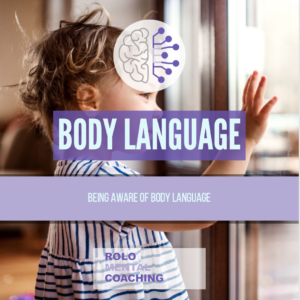RMC Weekly Blog: Being Aware of Body Language

Body language is the use of physical behavior, expressions, and mannerisms to communicate nonverbally, often done instinctively rather than consciously. Whether you are aware of it or not, you’re continuously giving and receiving wordless signals when you interact with others.
More than 90% of our communication is non-verbal. Our body makes gestures and involuntary movements to signal what we are thinking or feeling. This takes up 55% of our output for the world around us. 38% of our communications are the little sounds and auditory gestures we make to express ourselves. Often these are habits and culturally significant as well. They are so ingrained that we are not aware that this is part of our communication with others around us. Only 7% of our communication is through the use of words.
This makes you think about why we use words at all. And when you come to think about how many times we have miscommunications when we do use words. Not to even speak when we are trying to communicate with someone with a different language than us. It makes for an interesting conversation when you think about the power of speech. To have effective and powerful speaking skills, you have to filter well what comes out of your mind as spoken words and express your body fluency that corresponds with what you are saying.
Our preset interpreting default is triggered when the fluidity of these do not match up. An untrained person might not be consciously aware that there is something off when someone is lying or being deceitful, but almost always have a “gut” feeling. This instinct and intuiting skill is most developed in successful people when we are talking about their interactions with the rest of the world.
We at Rolo Mental Coaching attempt to enhance these features by training the awareness and interpreting of “gut” feelings. Our goal here is to have these skills be on a pre-conscious level of awareness for them to be innate and automatic. It is our experience that when a high-performance client also has these skills developed at a high level they contribute to their success and well-being.

Here are some examples of body language:
- Maintain good eye contact.
- Shaking or nodding the head.
- Type of handshake when we greet someone.
- Hand gestures
- Posture
- Body position when sitting or standing
- Facial expressions.
- Blinking of the eyes
Some of the most common examples are probably already well accepted by most people to be interpretations of body language. Here are a few:
- Crossed arms and legs signal resistance to the received information.
- Smiles that crinkle the eyes are most often genuine.
- Mirroring your body language to show acceptance and show of interest.
- Sloughed shoulders mean a lack of confidence
- Making no eye contact when answering is deceitful
- Rapid nodding signals need of approval.
If you are now worried that you are an open book to everyone then please be comforted by the notion that most people are not so aware of these signals and do not act on these triggers. However, should you come across a body language specialist then our suggestion is to just speak truthfully then your communication across body, voice, and word use will match up automatically. This gives new meaning to the sacred words “the truth will set you free”. 😊
Rolo Mental Coaches are specialists in high-performance coaching.
Follow us on Instagram and FaceBook.
If you are interested in working with RMC, feel free to reach out to us via our contact page by clicking here.

